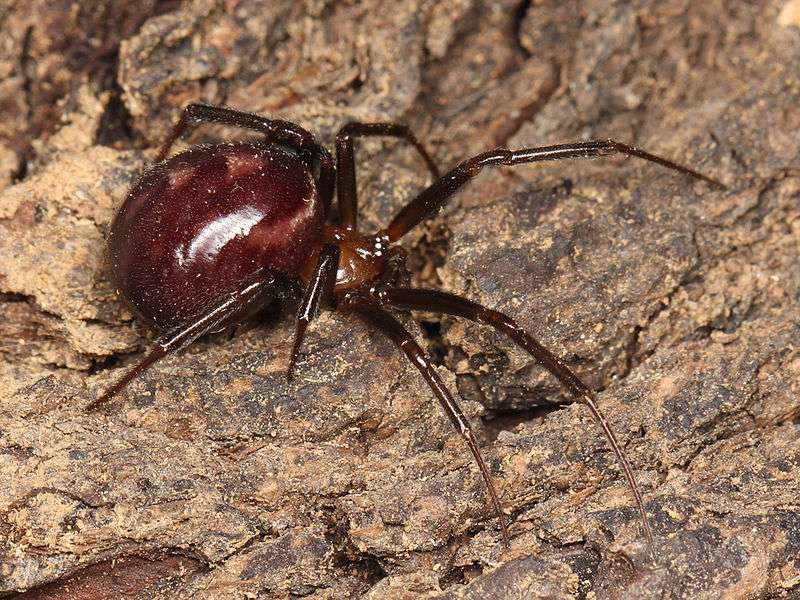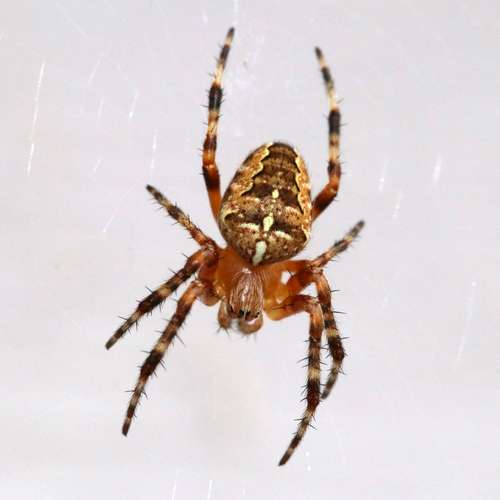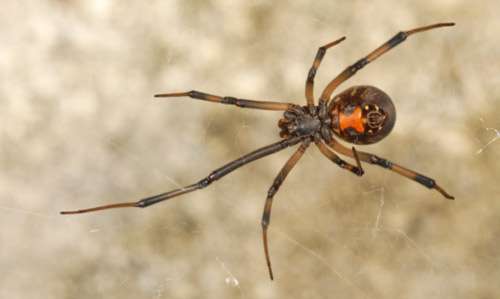
The cupboard spider, also known as Steatoda grossa, is a common species of spider in the Steatoda genus. It is sometimes referred to as the brown house spider, the dark comb-footed spider (in Australia) or the false black widow (although several other species go by these names).
It is a widely distributed species that may be found all over the world, including North America, Europe and Australasia. As two of the spider’s common names suggest, it resembles the black widow and other deadly spiders in the genus Latrodectus superficially and is sometimes mistaken for them.
Morphology
- Steatoda species have shiny, slender legs, a short cephalothorax, and a bigger abdomen, which in Steatoda is rather egg-shaped, like the majority of members of the family Theridiidae.
- From brown or reddish plum to satiny black, the color might fluctuate. A frontal crescent, white or beige patches, and occasionally tiny red dots or a faint red line can all be found on the abdomen (but never a strong stripe like a Redback Spider).
- The underside of the abdomen does not have the orange-red “hourglass” mark that a Redback Spider does.
- The female Cupboard Spider lacks the distinguishing red stripe on its back, making it easy to mistake it for a Redback Spider.
- The two spiders are linked since they both belong to the Theridiidae family, also referred to as comb-footed spiders. The Cupboard Spider is less deadly than its Redback sibling, though.
Diet
Some species of False Black Widow Spiders actually feed on other spider species that are thought to be dangerous to humans as well as Black Widow Spiders. The primary prey of false black widow spiders is crawling insects, particularly isopods (sowbugs and pillbugs).

Habitat
The worldwide species S. grossa can be found all along the three coastlines of North America, in Australia and New Zealand, as well as in Europe. As long as there is a source of prey, steatoda spiders will construct a gum-footed web, which is a tangled-looking web with sticky lines. However, their common name derives from a preference for constructing their snare in any dark, sheltered, undisturbed location around the house or garden, including among old furniture and junk stored in sheds and garages, under garden benches, around compost bins, in upturned flower pots, and similar places.
Do cupboard spiders pose a threat?
Risk to humans
Rarely do bites from Steatoda species occur. They have not historically been thought to be very dangerous to people, but in a few recent cases of Steatoda bites when the spider has been located, more severe symptoms have been noted. Redback antivenom has been used to successfully treat these symptoms in two instances. Rarely, the bite has been linked to minor skin problems.
Breeding
Small and waiting for an opportunity to mate, the male spider lives on the edges of the female’s web. Typically, when mating is complete, he is devoured. In contrast to female Steatoda, males are longer, frequently have modified head regions, and in some species, have bigger front legs. Some species’ males, which may mimic ants, can be seen roaming amid leaf litter during the day in pursuit of females’ webs.
As Pet
False widows are rarely kept as pets. This species may, nevertheless, be available in some pet stores.
Table





